The celebratory week in Los Cabos was drawing to an end—the obligatory sunset dinner cruise out to the region’s famous arch that divides the Sea of Cortez from the Pacific was about over, and the big party boat was heading back to the marina.
We watched from the top deck as the deep blue water faded to black in the dying light, the last hit of sunshine gracing the rocks and the storied “Drinking Dragon” in the distance. The trip was a graduation present for my oldest before she left for a summer gig in Grand Teton National Park. We did all the touristy things—ziplining, snorkeling … the sunset dinner “booze cruise.” It was fun to be a tourist.
But we also did a little fishing. Nothing too serious—we didn’t spend much time on the East Cape “running down the man,” but we did cast to some voracious giant needlefish and some feisty jacks in the surf not far from San Jose del Cabo. The surf was high on the beach near the condo, which made fly fishing all but impossible, but we tried anyway, more or less to say we did.
The only bag I checked for the trip was my fishing gear—I put an assortment of saltwater stuff on the plane in hopes of gentle surf, clear mornings and perfect evenings. We caught a bit of each, but rarely at the opportune time, so fishing was an afterthought. The bag full a few thousand dollars worth of rods, reels, lines and flies mostly sat idle, but it was nice to have it along.
From the deck of the big party boat, most of the tourists were tuned into the next piña colada and the live band cranking out classic rock from a makeshift stage. As the light faded, I looked off the stern of the boat and noticed two white-clad kitchen workers standing on the little the launch platform where, during day trips, crew members help tourists into kayaks, stand-up paddleboards and snorkeling gear.
These two guys were throwing bits of corn tortillas into the ocean behind the boat and then baiting small hooks with the same chum before tossing the hooks into the drink via handline. At their feet rested a handful of pan-sized jacks, a triggerfish and a late-run sierra mackerel. I watched closely as one fisherman, whose hand line was wrapped around an empty Sprite bottle, yanked in another respectable jack. Dinner.
As much fun as swilling cheap boat drinks below the Tropic of Cancer can be, I was so tempted to wander down the steps of the boat and see if these guys would let me make a few “casts.” The irony wasn’t lost on me—I had paid to transport a four-figure bag of fishing gear to Cabo, where I managed a handful of fun fish from the beach. These guys who, an hour earlier, were serving fajitas and beans to a boatful of gluttonous tourists, were catching more fish than I did, with all my gear and all my swag, using only a 40-pound fishing line, a circle hook and a leftover tortilla.
The necessity wasn’t lost on me either. While every fish I caught went back to the ocean, these guys were catching their next meal, and probably the next meal for their families at home, too. I felt a pang of guilt—sometimes, fishing for pleasure does that to me.
But I watched with awe at the simplicity of the endeavor. A little part of me cheered every time one of the fishermen hooked up and yanked, hand over fist, the next menu item from the sea.
This wasn’t a game to these guys—they were really fishing for food, for sustenance, and healthy sustenance, at that. The timeline was short, given the quick ride back to the marina and the work that awaited them as the passengers disembarked, leaving behind a boat full of empty plastic cups and a couple hundred dirty dishes.
They had about 20 minutes to catch dinner. It was an exercise in fishing economy. And they were good at it.
I get called a “fisherman” a lot. But I don’t think that’s fitting. I fish, sure. I fly fish, almost exclusively, if I have my way about it. But a fisherman? No. That I am not.
These guys were fishermen.










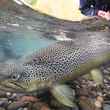




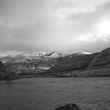
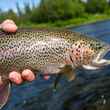



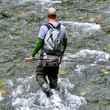
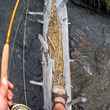



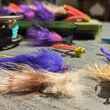
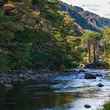
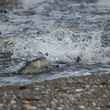
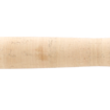
Comments